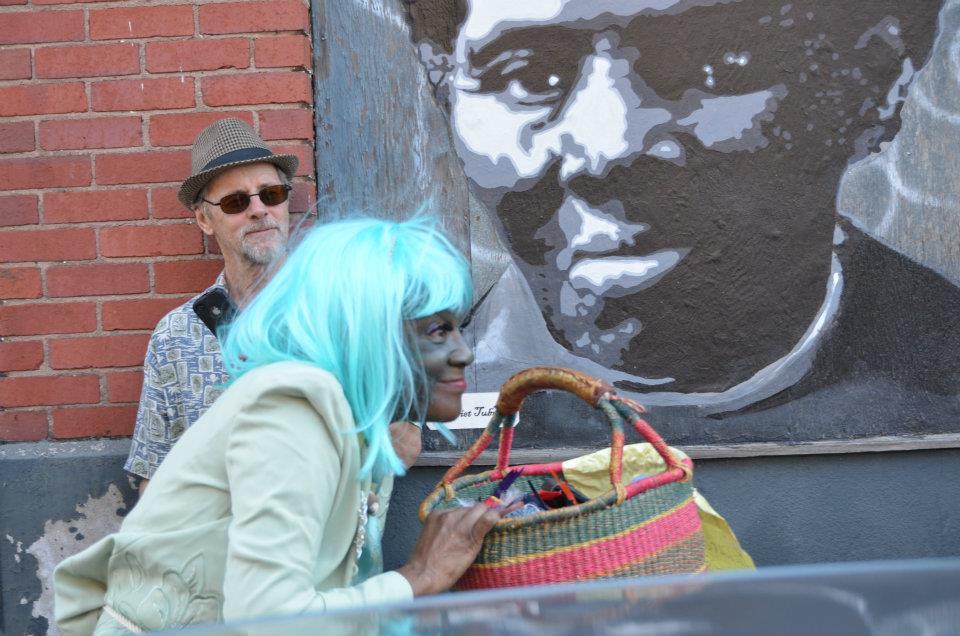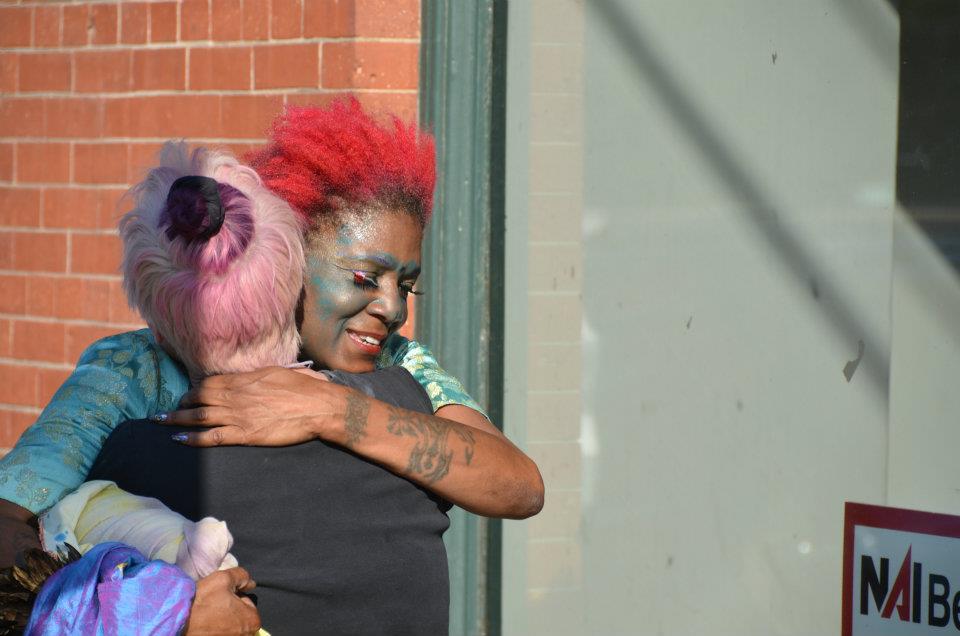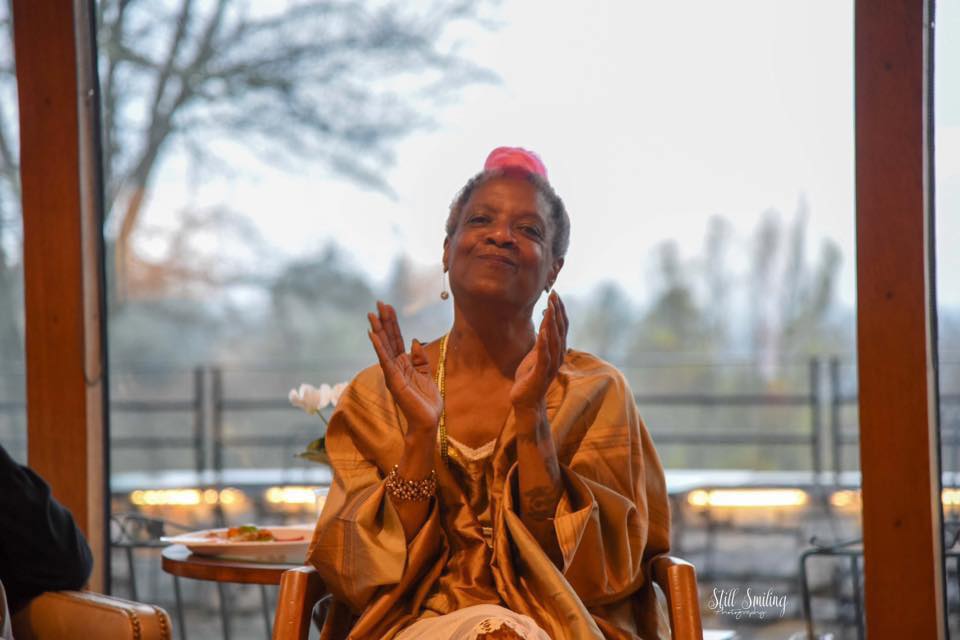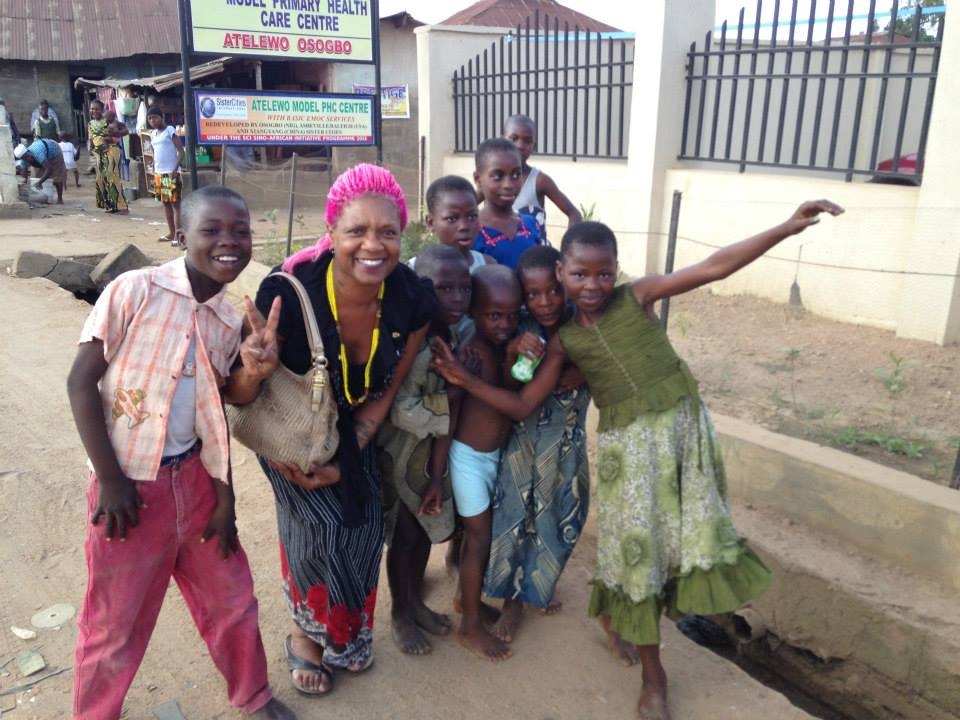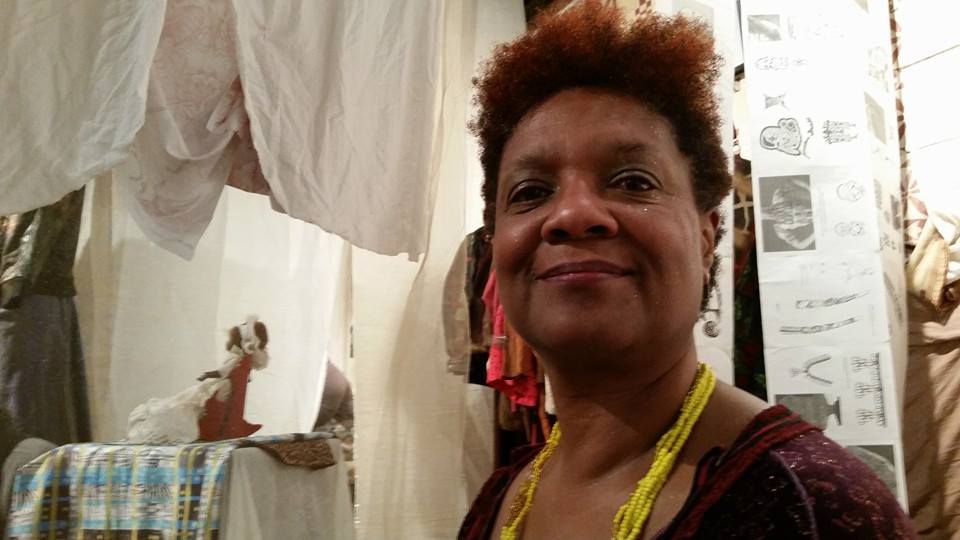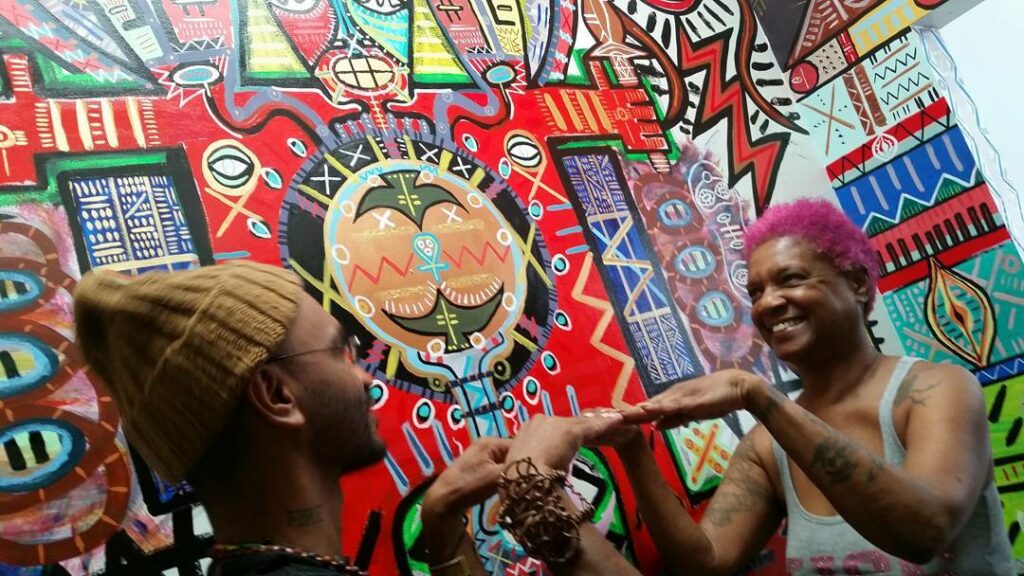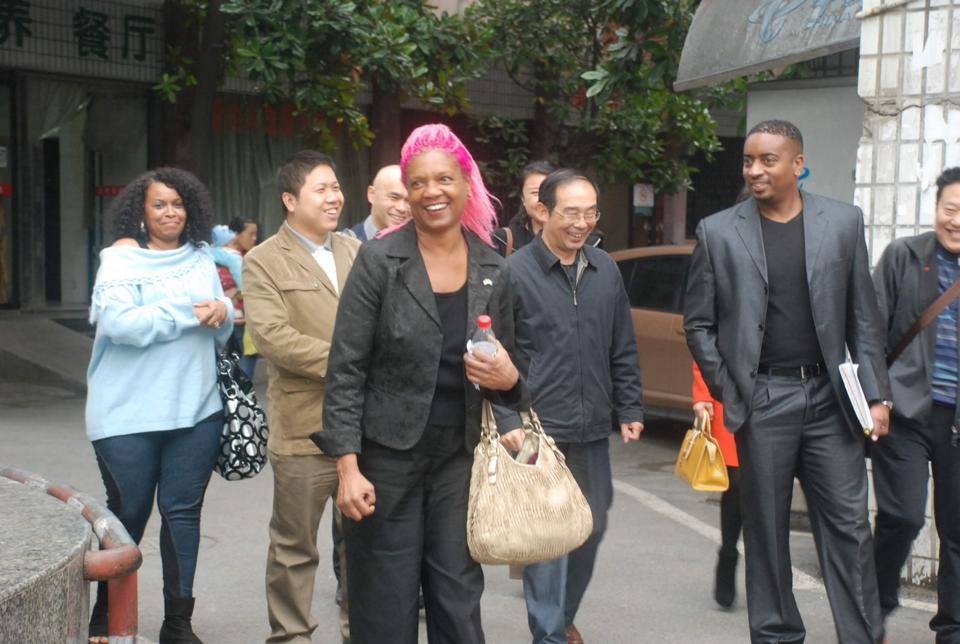IMMERSIVE ARTIST

Valeria Ann Watson, an African American artist and humanitarian born in 1948, has been creating art for over 60 years.
This treasure trove of art is now available for sale. With a “selfie” focus reminiscent of the self-portraits of Frida Kahlo, Watson centers her face as the icon of her priesthood and spiritual ordination.
She paints herself through the evolving lens of women’s freedom, gender equality, and bodily autonomy. The immersive quality of her art weaves her self-portraits into painterly collages and sculptural assemblages constructed from recycled materials, fabrics, plastics, and furniture.
Her foundational work presented here includes charcoal sketches and life drawings from the 1990s, as well as paintings and collages from the 1980s to the present.
Timeline
The First Miss Black Denver
Watson’s work reflects a lifetime of experiences, from being crowned the first Miss Black Denver in 1969, to completing undergraduate studies at the College of Emporia in Kansas, to earning an M.A. at Columbia University. Her graduate school years were marked by the wonder and excitement of living in New York City.
Valeria was named the First Best Tattooed Woman
From Broadway costume houses to CBGB’s to the Hells Angels clubhouse, every space became grist for her creative mill. “After my pattern-making job at Barbara Matera’s, I would come home to a couch full of Hells Angels waiting for tattoos. It helped pay the bills.” In 1975, Valeria was named the Best Tattooed Woman at the first World Convention of Tattoo Artists and Fans.
From Tailor to Priestess of Osun Osogbo
In Hollywood, Watson worked as a tailor during the filming of Posse and Buffalo Soldiers, collaborating closely with stars such as Danny Glover and Melvin and Mario Van Peebles. In 2000, she was initiated by Baba Ifa Karade as a priestess of Osun and was also ordained as a minister. In 2006, she traveled to Osogbo, Nigeria, where she was initiated as a Priestess of Osun Osogbo in the traditional African religion of Ifa.
Immersive Affrilachian
Valeria lives with her partner on seven wooded acres near Asheville, North Carolina. Before the pandemic, her studios were located in the River Arts District, which was recently ravaged by Hurricane Helene, and in South Slope, a gentrifying section of Asheville. She has been exhibiting in Appalachia and identifying as an Affrilachian artist since moving there more than 20 years ago.
"I needed a space that was wild and ragged, in a forest hidden from conformity…it is my Harlem Renaissance…drawing and painting and trash sculpture…a free open space for play and masquerade."
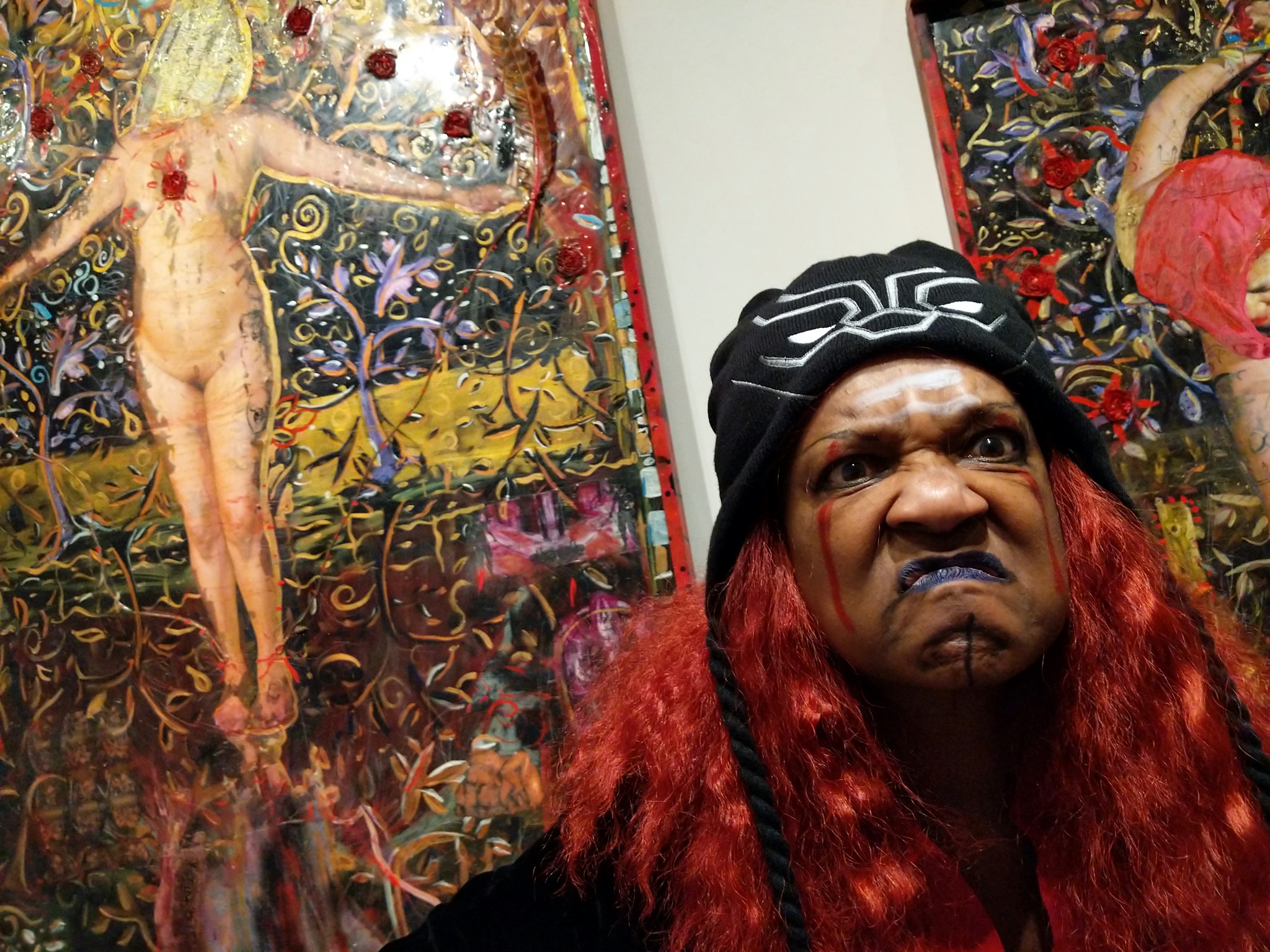
There are artists who recognize their uniqueness from the moment of birth. When life gets in the way, we bob and weave to the rhythm of freedom. The study of liberal arts taught me what it means to be a contemporary artist and formed my “raison d’être.”
Frida Kahlo modeled a self-focused vision for my art, and Romare Bearden made collage his signature project. My other influences include El Anatsui, Zandra Rhodes, Charlotte “JoKo” Beck, Toni Packer, Patton Campbell, Nina Simone, Nelson Mandela, and the Columbia University Costume Department.
A French sensibility has woven itself through my work since high school in Denver, Colorado. What I layer into my art reflects the rich history of southern France—the Saracens, the Moors, and Mary Magdalene’s ministry—combined with my fascination for pirates, Vikings, and Yoruba culture. These influences emerge and scatter across my colorful canvases, shaping my subconscious expression.
My grandmothers taught me skills such as sewing, knitting, quilting, ironing, cleaning, and tailoring. I am pouring my ancestors into a mold shaped by my pals—Picasso, Chagall, Gauguin, Van Gogh, Nina Simone, Josephine Baker, Jacques Brel, and Edith Piaf. As Coach Walz says, “Leave the yearbook open.” You never know what you’re going to get unless you try.
I am grateful for my parents, Helen and Vernell Watson, and for the generations that preceded me. My family has owned land since the end of chattel slavery, in Pelham, Texas, where my ancestor John Carruthers taught reading and accounting in the Black community. We maintain a family museum there to this day.
It is my wish to share my vision for our land and the mark on American history I make with my art—for my children, grandchildren, and great-grandchildren. I look forward to reaching the goal and the gold, and as Snoop Dogg says, “I thank my mf’n self” for perseverance and belief in my vision. I am what I have made myself into. The true focus of a life in art for me is the sheer bliss of surprise as it unfolds. I thank all who supported me through the rough times, and I welcome you to the celebration.
Welcome to my Atelier!

